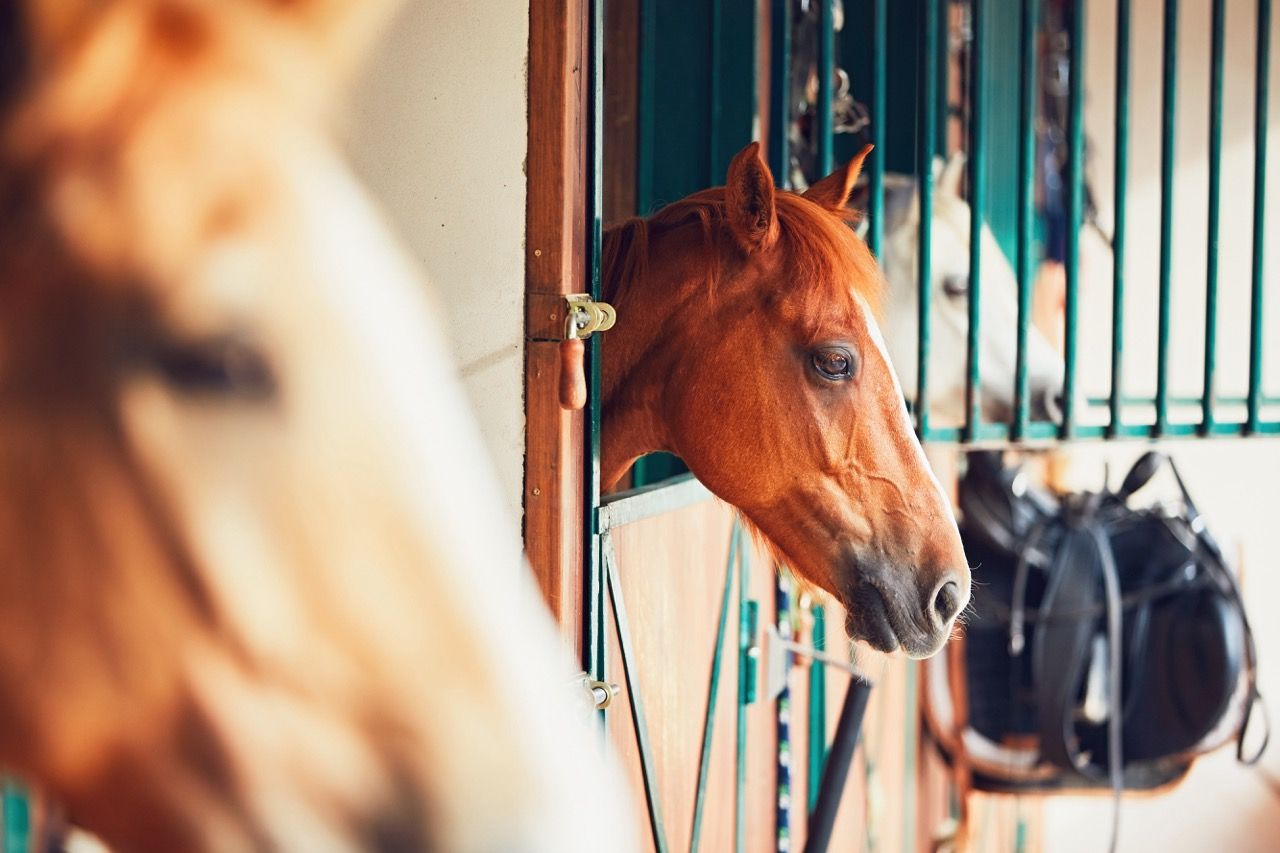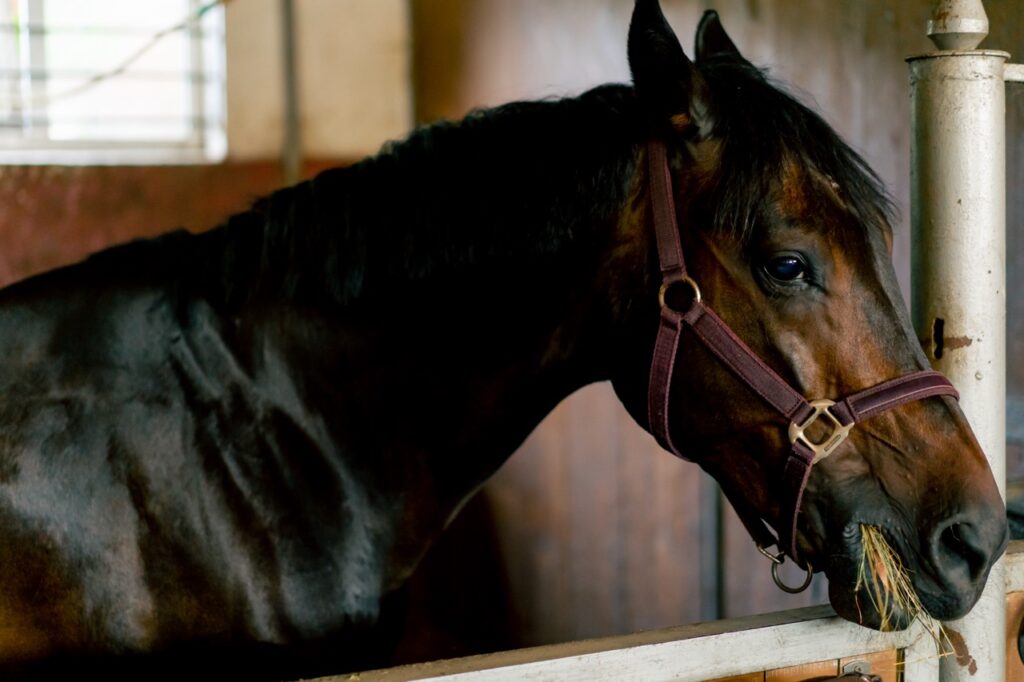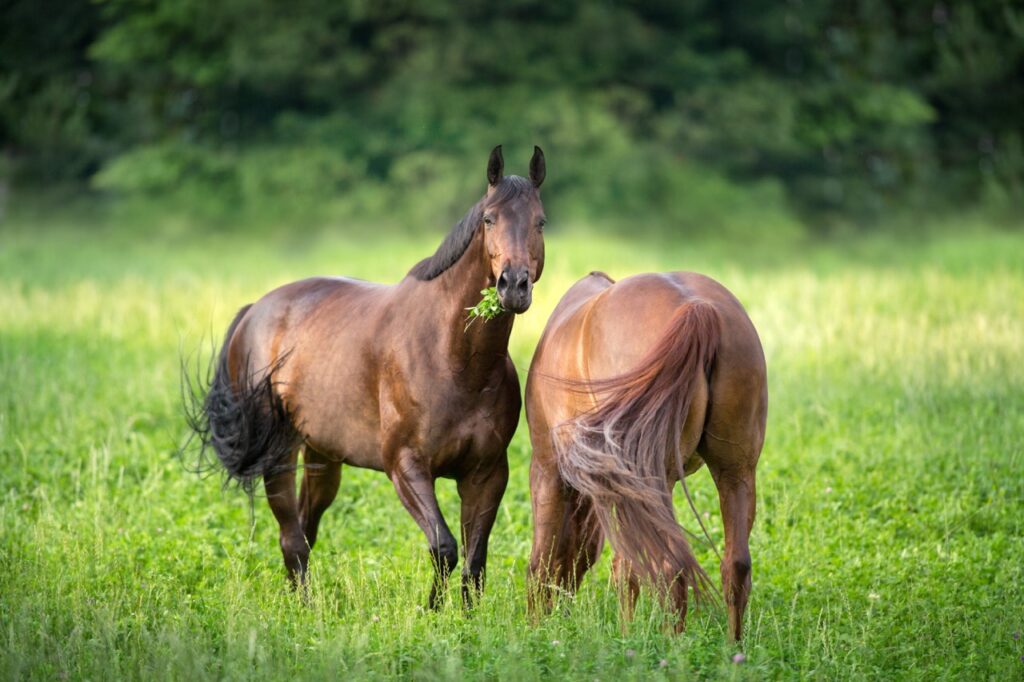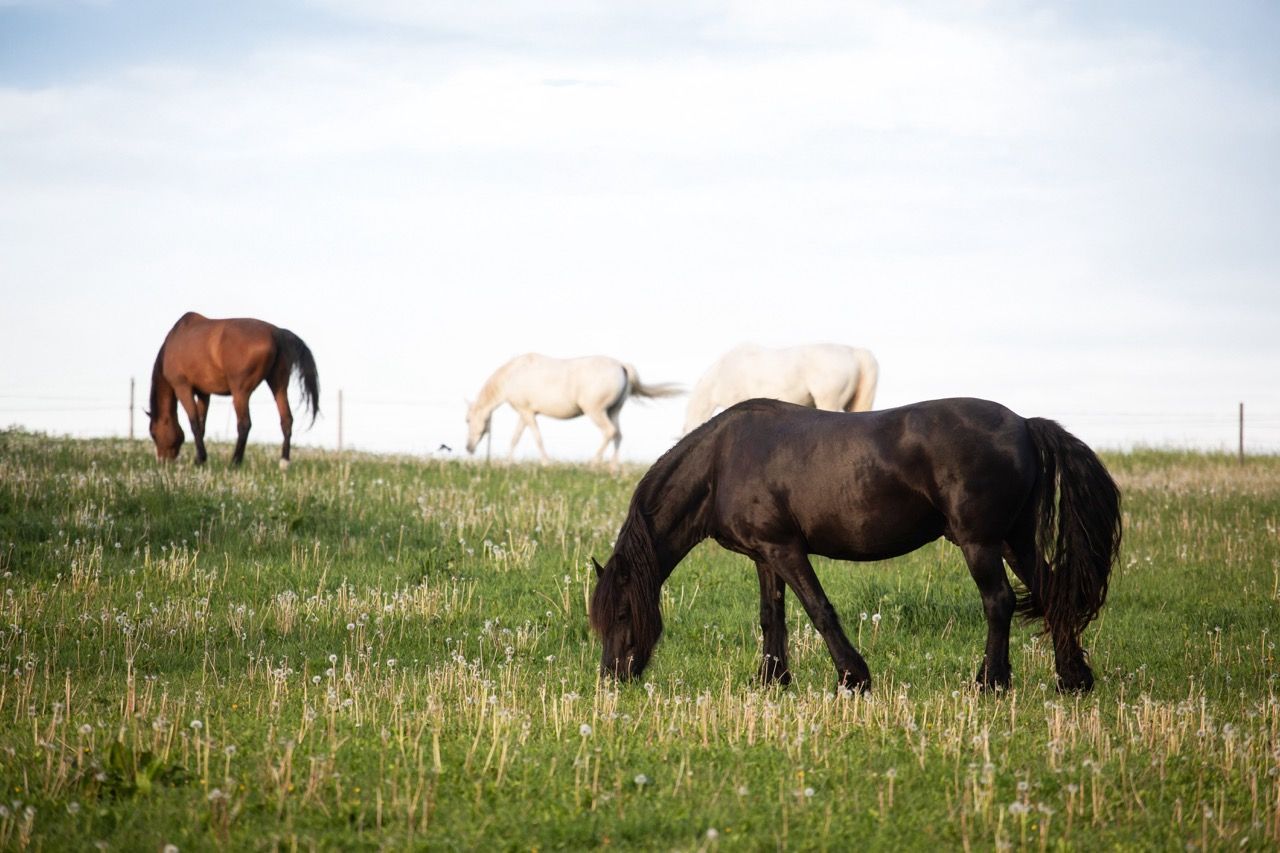Does Your Horse Have Gastric Ulcers? Signs, and How to Prevent it

Gastric ulcers are a common, yet often overlooked health issue in horses. These painful lesions can significantly impact a horse’s wellbeing and performance. Understanding the signs of gastric ulcers and knowing how to prevent them is essential for any horse owner or barn manager. In this article, we’ll explore the causes, symptoms, and prevention strategies for gastric ulcers in horses.
What Are Gastric Ulcers?
Gastric ulcers are lesions/sores that develop on the lining of the stomach. They occur when the protective lining is eroded, often due to excessive acidity. In horses, this condition is primarily associated with stress, diet, and management practices.
- Equine Squamous Gastric Ulcer Syndrome (ESGUS) refers to ulcers affecting the upper squamous region of the stomach.*
- Equine Glandular Gastric Ulcer Syndrome (EGGUS) refers to ulcers affecting the lower glandular region of the stomach.*
Common Causes of Gastric Ulcers
Diet: Horses are natural grazers and thrive on a diet rich in forage. A lack of continuous forage can lead to increased stomach acid and a higher risk of gastric ulcers.
Stress: Changes in routine, travel, competition, and isolation can all induce stress in horses, contributing to ulcer development.
Medications: Certain medications, particularly non-steroidal anti-inflammatory drugs (NSAIDs), can increase the risk of gastric ulcers.
Limited Turnout: Horses that are kept in stalls for long periods without regular turnout are more likely to develop ulcers due to reduced forage intake and increased stress.

Signs of Gastric Ulcers in Your Horse
Recognizing the signs of gastric ulcers is crucial for early intervention, management and support for your horse. Some common symptoms include, in no particular order and remembering some horses show severe symptoms when they have gastric ulcers, where as others are subtle:
Changes in Appetite
A horse with gastric ulcers may show a decreased interest in food or may eat only small amounts.
Weight Loss
Unexplained weight loss can be a significant indicator of ulcers, especially if the horse’s feeding habits have not changed.
Behavioral Changes
Increased irritability, aggression, or a change in temperament can signal discomfort.
Colic Symptoms
Horses with gastric ulcers may exhibit signs of colic, such as rolling, pawing, or looking at their sides.
Poor Coat Condition
A dull or rough coat can indicate underlying health issues, including gastric ulcers.
Excessive Salivation
Some horses may drool excessively due to discomfort in the mouth and stomach.
If you notice any of these signs in your horse, consult a veterinarian for a thorough evaluation and possible diagnostic testing.
Diagnosing Gastric Ulcers
Diagnosis typically involves a combination of physical examinations, behavioral observations, and possibly gastroscopy. A gastroscopy is a procedure that allows veterinarians to visualize the stomach lining directly with the use of a camera. The horse is sedated and the endoscope is then passed down the oesophagus to the stomach. Early diagnosis is key to effective treatment and recovery.
Treatment for Horses with Gastric Ulcers
If a diagnosis of gastric ulcers are confirmed by a veterinary professional, treatment may include:
Medications: Proton pump inhibitors and antacids are commonly prescribed to reduce stomach acid and promote healing.
Dietary Changes: Increasing forage availability and minimizing grain can help manage stomach acidity.
Stress Reduction: Implementing a consistent routine, providing regular turnout, and minimizing changes in environment can reduce stress levels.
How to Prevent Gastric Ulcers in Your Horse?
Preventing gastric ulcers involves a proactive approach to your horse’s diet and environment. Here are some effective strategies:
Provide Constant Forage
Ensure your horse has continuous access to hay or pasture. This helps buffer stomach acid and promotes natural chewing.
Reduce Stress
Create a calm and stable environment. If possible, keep your horse in a routine and minimize drastic changes in their daily life.
Manage Feeding Practices
Avoid large meals and opt for smaller, more frequent feedings to keep the stomach from becoming overly acidic.
Limit NSAID Use
Consult with your veterinarian regarding the use of medications that may contribute to ulcer development, and explore alternatives if necessary.
Regular Turnout
Allow your horse plenty of time to graze and move around. This can help reduce stress and encourage natural feeding behaviors.
Monitor Weight and Condition
Keep an eye on your horse’s weight and overall condition. Early detection of any changes can lead to quicker intervention.

*In a scientific study conducted by a group of researchers on gastric ulcers, key findings included:
- Horses with Warmblood breeding were more likely to have gastric ulcers;
- Horses with an increased number of riders or caretakers were more likely to have gastric ulcers;
- Oddly, horses with sand enteropathy had a lower risk of gastric ulcers; and
- The incidence of ulcers in the non-glandular region was similar to other published studies.
Gastric ulcers are a serious condition that can affect your horse’s health and performance. By understanding the signs and taking proactive measures to prevent ulcers, you can help ensure your horse stays healthy and happy. Regular check ups with your veterinarian, combined with good management practices will go a long way in protecting your horse from this painful condition. If you suspect your horse may be suffering from gastric ulcers, don’t hesitate to seek professional veterinary advice.
*Monki, J., M. Hewetson, A.-M.K. Virtala. 2016. Risk factors for equine gastric glandular disease: A case-control study in a Finnish referral hospital population. Journal of Veterinary Internal Medicine. 30:1270-1275.
*Squamous vs Glandular Ulcers in Horses: What’s the Difference? Mad Barn, By H.Godfrey, B.Sc., M.Sc.



